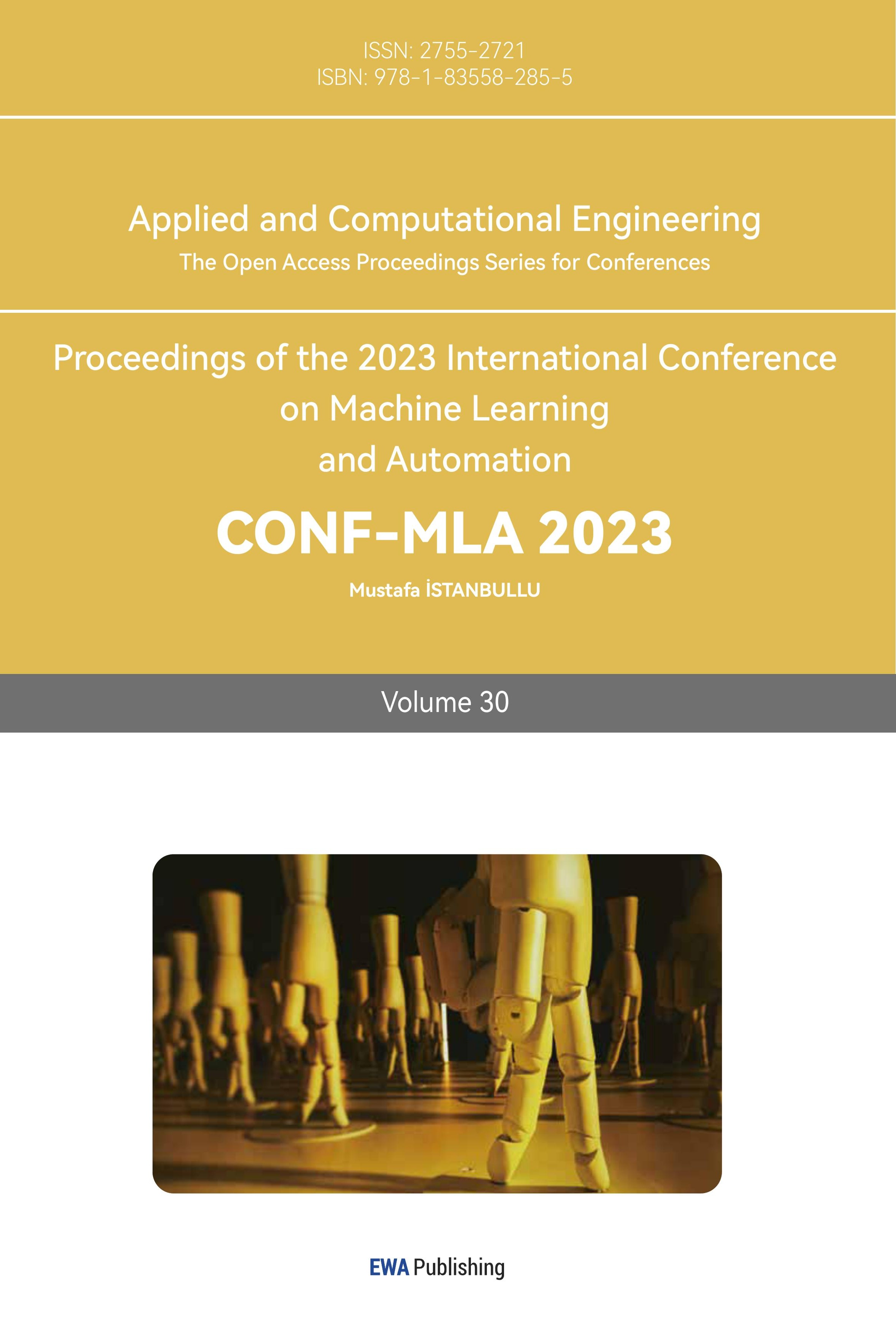References
[1]. Maass W. Networks of spiking neurons: The third generation of neural network models. Neural Networks. 1997;10(9):1659–1671.
[2]. Diehl, P. U., and Cook, M. (2015). Unsupervised learning of digit recognition using spike-timing-dependent plasticity. Front. Comput. Neurosci. 9:99. doi:10.3389/fncom.2015.00099
[3]. G. Li, L. Deng, Y. Chua, P. Li, E. O. Neftci, and H. Li, “Spiking neural network learning, benchmarking, programming and executing,” Frontiers in Neuroscience, vol. 14, 2020.
[4]. Jason K. Eshraghian, Max Ward, Emre Neftci, Xinxin Wang, Gregor Lenz, Girish Dwivedi, Mohammed Bennamoun, Doo Seok Jeong, and Wei D. Lu. “Training Spiking Neural Networks Using Lessons From Deep Learning”. arXiv preprint arXiv:2109.12894, September 2021.
[5]. E. M. Izhikevich, “Which model to use for cortical spiking neurons?” IEEE transactions on neural networks, vol. 15, no. 5, pp. 1063–1070,2004.
[6]. A. M. Turing, “Computing machinery and intelligence,” Mind, vol. 59, no. 236, pp. 433–460, 1950.
[7]. E. M. Izhikevich, “Simple model of spiking neurons,” IEEE Transactions on neural networks, vol. 14, no. 6, pp. 1569–1572, 2003.
[8]. Anthony N Burkitt. 2006. A review of the integrate-and-fire neuron model: I. Homogeneous synaptic input. Biological cybernetics 95, 1 (2006), 1–19.
[9]. Diehl, P. U., Neil, D., Binas, J., Cook, M., Liu, S.-C., and Pfeiffer, M. (2015). “Fast-classifying, high-accuracy spiking deep networks through weight and threshold balancing,” in International Joint Conference on Neural Networks (IJCNN) (Anchorag, AK), 1–8. doi: 10.1109/ijcnn.2015.7280696
[10]. Indiveri, G., Corradi, F., and Qiao, N. (2015). “Neuromorphic architectures for spiking deep neural networks,” in 2015 IEEE International Electron Devices Meeting (IEDM) (Washington, DC: IEEE), 1–4. doi: 10.1109/iedm.2015.7409623
[11]. Sengupta, A., Ye, Y., Wang, R., Liu, C., & Roy, K. (2018). Going deeper in spiking networks: VGG and residual architectures, arXiv [Preprint]. arXiv:1802.02627v3.
[12]. Bi G-Q, Poo M-M. Synaptic modifications in cultured hippocampal neurons: dependence on spike timing, synaptic strength, and postsynaptic cell type. J. Neurosci. 1998;18(24):10464.
Cite this article
Liu,Z. (2024). Research on handwritten digits recognition system based on spiking neuron network. Applied and Computational Engineering,30,284-291.
Data availability
The datasets used and/or analyzed during the current study will be available from the authors upon reasonable request.
Disclaimer/Publisher's Note
The statements, opinions and data contained in all publications are solely those of the individual author(s) and contributor(s) and not of EWA Publishing and/or the editor(s). EWA Publishing and/or the editor(s) disclaim responsibility for any injury to people or property resulting from any ideas, methods, instructions or products referred to in the content.
About volume
Volume title: Proceedings of the 2023 International Conference on Machine Learning and Automation
© 2024 by the author(s). Licensee EWA Publishing, Oxford, UK. This article is an open access article distributed under the terms and
conditions of the Creative Commons Attribution (CC BY) license. Authors who
publish this series agree to the following terms:
1. Authors retain copyright and grant the series right of first publication with the work simultaneously licensed under a Creative Commons
Attribution License that allows others to share the work with an acknowledgment of the work's authorship and initial publication in this
series.
2. Authors are able to enter into separate, additional contractual arrangements for the non-exclusive distribution of the series's published
version of the work (e.g., post it to an institutional repository or publish it in a book), with an acknowledgment of its initial
publication in this series.
3. Authors are permitted and encouraged to post their work online (e.g., in institutional repositories or on their website) prior to and
during the submission process, as it can lead to productive exchanges, as well as earlier and greater citation of published work (See
Open access policy for details).
References
[1]. Maass W. Networks of spiking neurons: The third generation of neural network models. Neural Networks. 1997;10(9):1659–1671.
[2]. Diehl, P. U., and Cook, M. (2015). Unsupervised learning of digit recognition using spike-timing-dependent plasticity. Front. Comput. Neurosci. 9:99. doi:10.3389/fncom.2015.00099
[3]. G. Li, L. Deng, Y. Chua, P. Li, E. O. Neftci, and H. Li, “Spiking neural network learning, benchmarking, programming and executing,” Frontiers in Neuroscience, vol. 14, 2020.
[4]. Jason K. Eshraghian, Max Ward, Emre Neftci, Xinxin Wang, Gregor Lenz, Girish Dwivedi, Mohammed Bennamoun, Doo Seok Jeong, and Wei D. Lu. “Training Spiking Neural Networks Using Lessons From Deep Learning”. arXiv preprint arXiv:2109.12894, September 2021.
[5]. E. M. Izhikevich, “Which model to use for cortical spiking neurons?” IEEE transactions on neural networks, vol. 15, no. 5, pp. 1063–1070,2004.
[6]. A. M. Turing, “Computing machinery and intelligence,” Mind, vol. 59, no. 236, pp. 433–460, 1950.
[7]. E. M. Izhikevich, “Simple model of spiking neurons,” IEEE Transactions on neural networks, vol. 14, no. 6, pp. 1569–1572, 2003.
[8]. Anthony N Burkitt. 2006. A review of the integrate-and-fire neuron model: I. Homogeneous synaptic input. Biological cybernetics 95, 1 (2006), 1–19.
[9]. Diehl, P. U., Neil, D., Binas, J., Cook, M., Liu, S.-C., and Pfeiffer, M. (2015). “Fast-classifying, high-accuracy spiking deep networks through weight and threshold balancing,” in International Joint Conference on Neural Networks (IJCNN) (Anchorag, AK), 1–8. doi: 10.1109/ijcnn.2015.7280696
[10]. Indiveri, G., Corradi, F., and Qiao, N. (2015). “Neuromorphic architectures for spiking deep neural networks,” in 2015 IEEE International Electron Devices Meeting (IEDM) (Washington, DC: IEEE), 1–4. doi: 10.1109/iedm.2015.7409623
[11]. Sengupta, A., Ye, Y., Wang, R., Liu, C., & Roy, K. (2018). Going deeper in spiking networks: VGG and residual architectures, arXiv [Preprint]. arXiv:1802.02627v3.
[12]. Bi G-Q, Poo M-M. Synaptic modifications in cultured hippocampal neurons: dependence on spike timing, synaptic strength, and postsynaptic cell type. J. Neurosci. 1998;18(24):10464.









